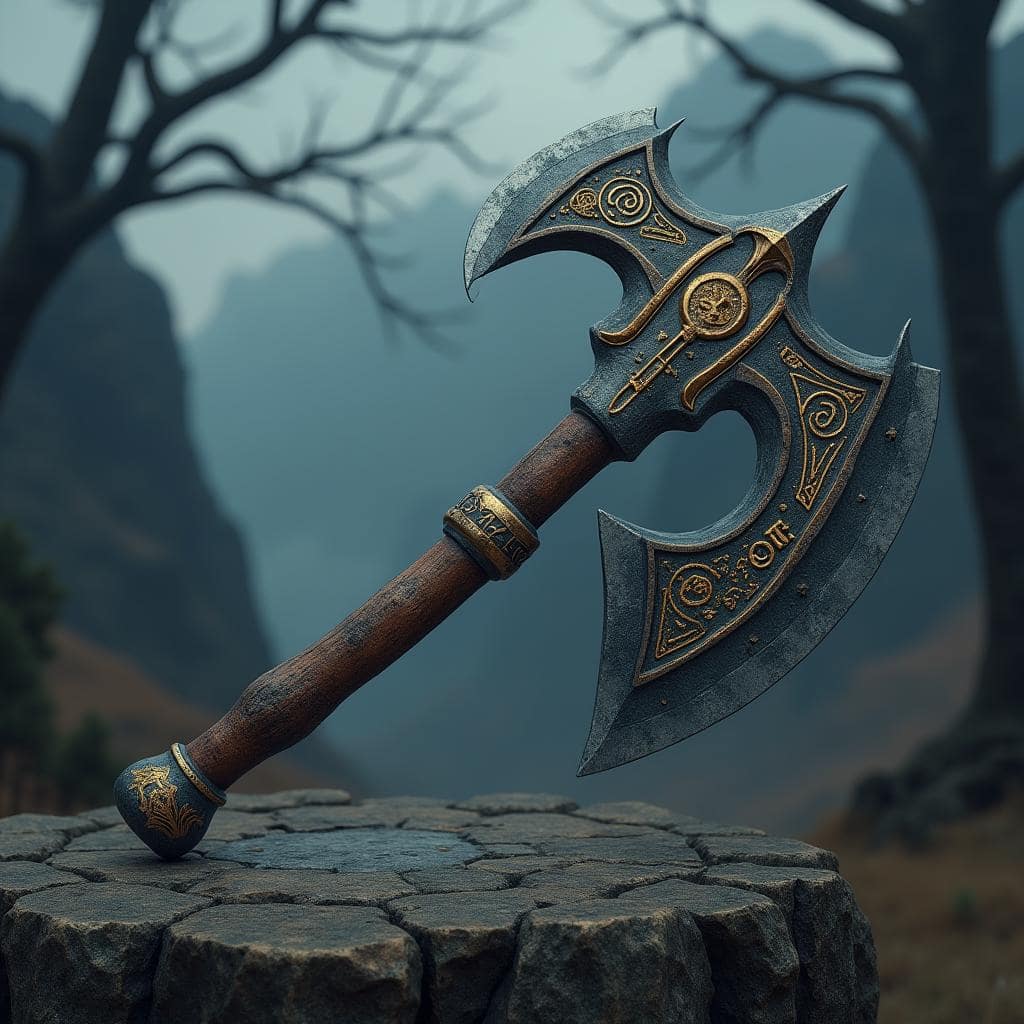Blog
The History of the Bearded Axe: From Viking Weapon to Modern Tool
The bearded axe was specifically engineered for combat. Its long handle provided a reach advantage, while the extended blade enabled effective cleaving and chopping. The “beard” of the axe, which protrudes beneath the blade, allowed warriors to hook and pull shields or disarm opponents.
A bearded axe can be distinguished from other chopping tools by its elongated blade, curved edge, and long handle. This design provides several advantages:
- Cutting power. The extended blade allows for a larger cutting surface.
- This advantage is provided by the long handle of the bearded axe.
- Hooking ability. The downward curve can hook and catch opponents’ shields or weapons, providing tactical advantages in combat.
- The shape makes it useful for both chopping and slicing.
All this made the bearded axe effective as both a weapon and a tool. Although originally, the bearded axe was specially designed for combat. It has a rich history that spans from its use in Viking warfare to its modern-day applications.
The origin of the bearded axe and its role in Viking warfare
This authentic tool, also known as a “Viking bearded axe“, emerged in the early medieval period, around the 8th to 11th centuries. Originating in Scandinavia, it was widely used by the Norsemen during the Viking Age.
Bearded axes were favored by Norse warriors for their effectiveness in both offense and defense. They were often used in conjunction with a shield and were effective in close combat situations. The design of the axe evolved from earlier, simpler forms of hand axes used in prehistoric times.
In Viking raids and battles, the bearded axe was a versatile weapon. It was not only used for combat, but also for tasks such as chopping wood or building fortifications. Historical accounts, including the sagas of Icelanders, often mention these axes in descriptions of Viking warfare.
Combat techniques with the bearded axe
The bearded axe’s design allowed Viking warriors to employ various combat techniques, including swinging, hacking, and thrusting. The curved blade made it effective against both armored and unarmored opponents.
The axe’s ability to hook and pull shields aside was a significant advantage in battle. The beard could catch the rim of a shield, allowing the warrior to drag the shield away and create openings for further attacks.
Tactical use of the bearded axe
Bearded axes were commonly used by Viking warriors in both raiding and defensive scenarios. Their effectiveness in close combat made them a preferred weapon for skirmishes and melee engagements.
In addition to its use in battle, the bearded axe was a practical tool for various tasks, including chopping wood and crafting. This versatility made it a valuable asset for Vikings in combat and daily life.
Symbolic and cultural significance of the bearded axe
The bearded axe became a symbol of Viking martial prowess and warrior identity. Its use in battle was associated with bravery and skill, contributing to the warrior’s reputation.
The bearded axe is frequently depicted in Viking art, including rune stones, carvings, and sagas. These depictions highlight its importance and reinforce its role in Viking culture.
Bearded axe usage in the Middle Ages and later centuries
After the Viking Age, the bearded axe continued to be popular throughout medieval Europe. It was adapted by various cultures, including the Anglo-Saxons and the Normans. The design was refined, and the axe became a standard part of medieval European arsenals.
In the late Middle Ages and early Renaissance, the bearded axe saw a decline in military use as firearms and other weaponry became dominant. However, its utility as a tool persisted, especially in regions with dense forests. You can explore the axe’s medieval applications in The History Channel’s medieval weapons section.
The popularity of the bearded axe as a modern tool
In modern times, the bearded axe has experienced a resurgence in popularity. It is now valued by collectors and enthusiasts who appreciate its historical significance and craftsmanship. Additionally, it has been adapted for various practical uses, from forestry to outdoor recreation.
Today’s bearded axes are crafted with a blend of traditional techniques and modern materials. This includes the use of high-carbon steel for durability and ergonomically designed handles for comfort.
Collecting bearded axes can be a rewarding hobby, but it’s essential to focus on authenticity and preservation. Original Viking axes are rare and highly valuable, while modern reproductions can offer an affordable alternative.
Conclusion
The bearded axe stands as a testament to the ingenuity of Viking smiths and their impact on weaponry and tool design. From its roots in ancient warfare to its place in contemporary craftsmanship, the bearded axe embodies a rich history that continues to fascinate and inspire. Whether you’re a historian, collector, or enthusiast, understanding its evolution and significance enriches our appreciation of this remarkable tool.

